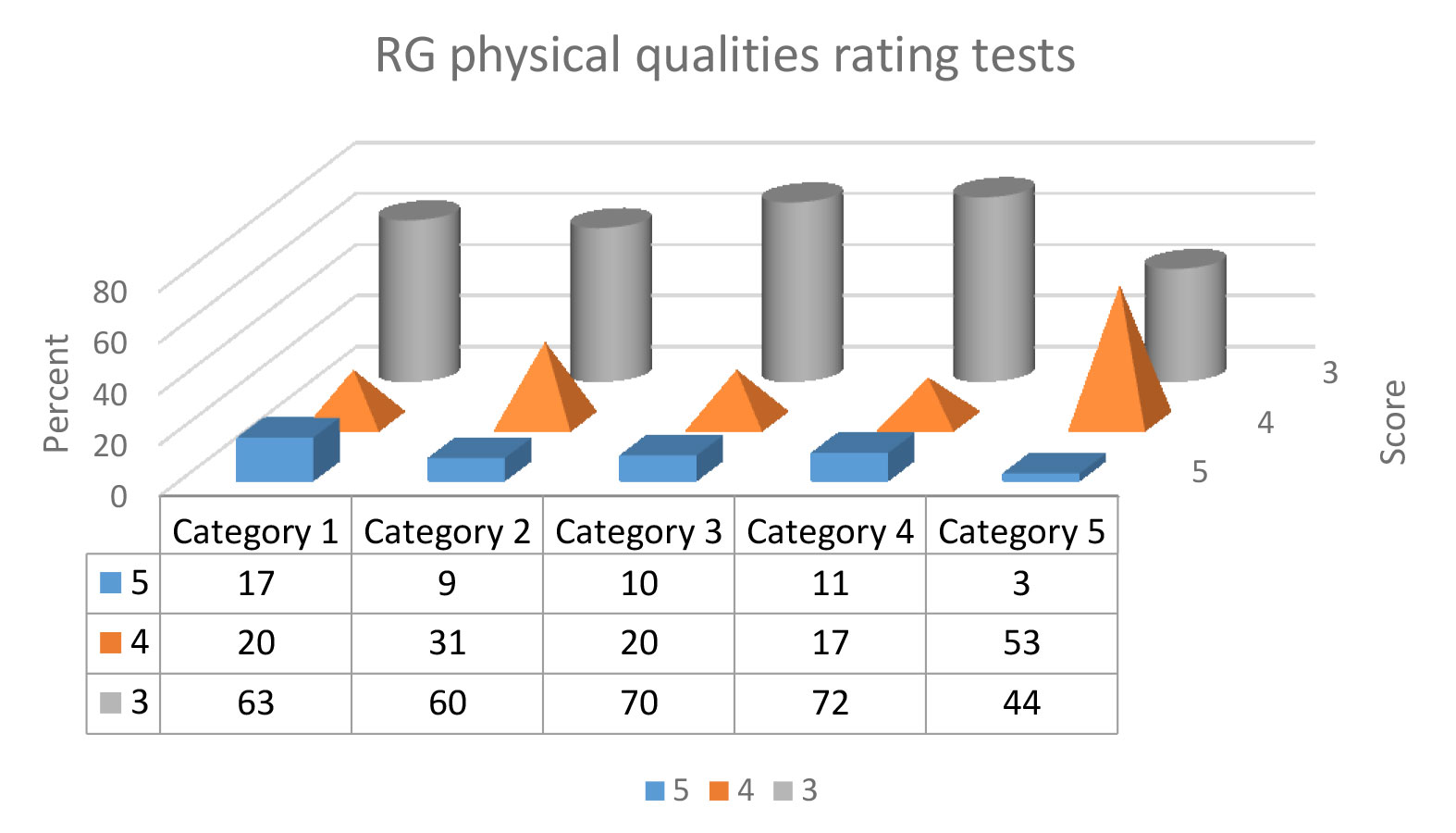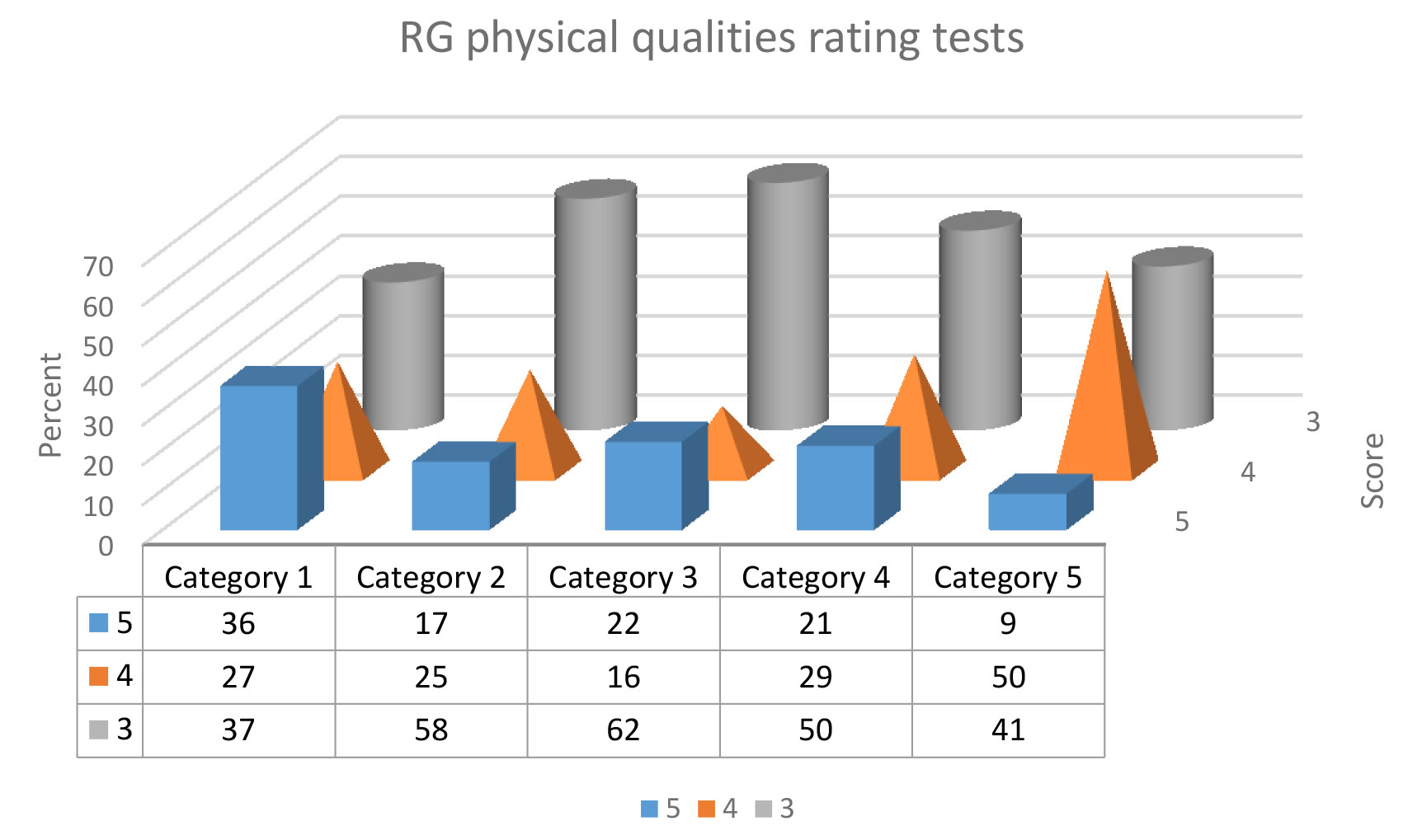Benefits of badminton driven academic physical education model for female students
ˑ:
Associate Professor, PhD I.R. Stovba1
Associate Professor, PhD N.V. Stolyarova1
Associate Professor, PhD O.L. Petrozak1
Associate Professor, PhD A.R. Ishmatova1
1South Ural State University (National Research University), Chelyabinsk
Keywords: female students of combined correspondence/ full time department, physical qualities, badminton, morphological examinations.
Background. As demonstrated by the practical experience, the first-year academic study time, particularly in the physical education domain, is the most challenging adaptation period for the female students of the correspondence course [8]. Exposed to the adaptation challenges are mostly the correspondence course students who come to university only for examinations and, hence, have little communication with the peers and teachers having to rely on themselves in studies with virtually no support from the academic community. These challenges need to be duly addressed by the correspondence education service developers and managers [6].
One of the core missions of the academic physical education service is to build up healthy values and motivations with due health agenda in the trainees so as to facilitate their self-development and cultural needs by habitual physical trainings [9].
Modern badminton may be ranked among the most accessible and effective sport disciplines to support the academic physical education service since badminton practices are known to offer multiple benefits for the body functionality building and shaping purposes as they facilitate development of the cardiovascular, respiratory and musculoskeletal systems and progress in endurance, coordination and many other physical qualities [1-3].
Objective of the study was to analyze benefits of a new badminton driven academic physical education model for physical qualities and anthropometrical characteristics of correspondence course students.
Methods and structure of the study. Sampled for the study were the 17-18 year old first-year female students of South Ural State University (n=40) from the correspondence department split up into Experimental and Reference Groups (EG, RG) of 20 people each. The Reference Group was trained as required by the standard academic physical education curriculum; and the Experimental Group was trained under the new badminton driven academic physical education model based on the valid academic badminton curriculum [5]. The 90min group trainings were run 2 times a week. Group progress in physical qualities was rated by the pre- versus post-experimental tests including prone push-ups; standing long jump; seated forward bends; 100m sprint; and 2000m race tests. The students’ anthropometrical characteristics were rated by the standard set of measurements including circumference (size) and length tests [6, 7].
Results and discussion. Given on Figures 1 and 2 hereunder is the group progress rating test data. Having compared the physical qualities test data with the standards, we found the badminton driven academic physical education model being rather beneficial as verified by the excellent EG test rates in virtually every test.

Figure 1. RG scores in the five tests: (1) prone push-ups; (2) standing long jump; (3) seated forward bends; (4) 100m sprint; and (5) 2000m race tests

Figure 2. EG scores in the five tests: (1) prone push-ups; (2) standing long jump; (3) seated forward bends; (4) 100m sprint; and (5) 2000m race tests
Furthermore, the group anthropometrical characteristics showed the RG making virtually no progress in body shaping as the group average body length, mass and chest circumference rates were found different depending on the age group standard – versus the EG that showed a significant progress in most of the tests: see Table 1 hereunder. It should be noted that the individual body length variation range in the EG was less than in the RG.
Table 1. EG versus RG anthropometrical data, М±т
|
Anthropometrical characteristics
|
М ±т |
тт - тах |
р |
|||
|
RG |
EG |
RG |
EG |
RG |
EG |
|
|
Body length, cm |
162,9±0,3 |
159,8±0,6 |
152,0-173 |
156,0-169,0 |
>0,05 |
>0,05 |
|
Body mass, kg |
55,6±1,2 |
57,2±1,3 |
45,0-68,9 |
45,0-62,0 |
>0,05 |
>0,05 |
|
Chest size, cm |
83,5±0,9 |
88,9±1,5 |
76,0-91,0 |
79,0-95,0 |
<0,01 |
<0,01 |
|
Shoulder size, cm |
26,0±0,1 |
27,0±0,31 |
21,1-28,3 |
22,9-29,0 |
<0,005 |
<0,005 |
|
Forearm size, cm |
23,4±0,2 |
24,5±03 |
20,9-25,4 |
23,0-28,0 |
<0,001 |
<0.001 |
|
Thigh size, cm |
54,3±0,8 |
55,8±08 |
45,3-62,8 |
50,9-63,9 |
>0,05 |
>0,05 |
|
Shin size, cm |
34,8±0,5 |
35,5±05 |
29,9-41,0 |
32,8-38,0 |
>0,05 |
>0,05 |
|
Upper limb length, cm |
70,9±0,7 |
76,6±0,3 |
63,5-78,9 |
68,9-72,6 |
>0,05 |
>0,05 |
|
Shoulder length, cm |
29,8±0,3 |
29,6±0,4 |
21,5-33,1 |
26,6±32,2 |
>0,05 |
>0,05 |
|
Forearm length, cm |
23,7±0,4 |
25,1±0,3 |
20,1-27,9 |
26,3-25,9 |
<0,001 |
<0,001 |
|
Wrist length, cm |
17,1±0,3 |
16,8±0,2 |
14,6-19,1 |
15,1-18,3 |
>0,05 |
>0,05 |
|
Lower limb length, cm |
86,4±0,6 |
86,9±0,31 |
76,9-95,4 |
85,4-90,9 |
>0,05 |
>0,05 |
|
Thigh length, cm |
43,3±0,7 |
42,3±0,5 |
36,0-49,9 |
39,1-45,1 |
>0,05 |
>0,05 |
|
Shin length, cm |
37,4±0,3 |
39,1±0,1 |
32,3-42,4 |
37,9-40,9 |
<0,01 |
<0,01 |
|
Foot length, cm |
24,1±0,3 |
24,3±0,1 |
21,1-26,1 |
23,6-25,1 |
>0,05 |
>0,05 |
|
Muscle mass, %
|
44,6±1,3 |
51,4±1,2 |
43,1-50,9 |
44,4-59,1 |
<0,05 |
<0,05 |
|
Fat mass, % |
20,9±0,5 |
16,5±0,1 |
11,1-28,6 |
15,1-17,4 |
<0.05 |
<0,05 |
|
Shin mass, kg |
2,6±0,2 |
2,6±0,2 |
2,5-2,7 |
2,5-2,7 |
>0,05 |
>0,05 |
|
Thigh mass, kg |
7,6±0,3 |
7,9±0,2 |
4,8-9,7 |
7,5-8,3 |
>0,05 |
>0,05 |
|
Shoulder mass, kg |
1,5±0,2 |
1,6±0,2 |
1,12-1,9 |
1,5-1,7 |
>0,05 |
>0,05 |
The tests found statistically significant (р>0.05) intergroup differences in the upper limb lengths. The wrist lengths were virtually the same in both groups, albeit the forearm length in the EG was tested significantly higher (р<0.001) than in the RG. This progress is natural for badminton players as the sport discipline is known to develop the body limb length (the so called ‘levers’), with the long upper limbs giving an advantage in the game. It should also be mentioned that the individual upper limb length variation range was shorter in the EG.
The lower limb lengths in both groups were found statistically insignificant (р>0.05), with the individual test rates varying in a wider range in the RG. The shin lengths in the EG were found significantly higher (р<0.01) than in the RG. Generally the post-experimental anthropometrics were found to verify the assumption that the relative masses and relative lengths of the body elements critical for success in badminton tend to grow with practical training experience. Furthermore, the EG was tested with a slightly higher body mass rates (р>0.05) versus the lower average group body length – that may be interpreted as the better muscular system progress in the EG. The assumption is confirmed by the higher chest (р<0.01) and forearm (p<0.001) circumference and higher percentage of the muscle mass (p<0.05) and lower fat mass rate (p<0.05) on average in the EG versus RG. No further significant intergroup differences were found in the other post-experimental anthropometrical characteristics. It should be mentioned that the individual variations in every anthropometrical test rate were wider in the RG versus EG.
On the whole, the pre- versus post-experimental group anthropometrical data were indicative of specific body shaping progress in the badminton-playing EG. The badminton practices were found to develop sizes and lengths of the sport-specific body elements.
Conclusion. The study data showed benefits of the badminton basics course in the academic correspondence physical education curriculum as verified by the Experimental Group progress in the speed endurance, flexibility and speed test rates versus the Reference Group. The practices were tested to encourage interest in the physical trainings and boost motivations for the academic physical education service; since the sport is rather emotional and stimulates the correspondence course students for physical activity. The physical progress tests found the speed qualities to grow by 10% (excellent score); flexibility by 12%; endurance by 6%; and speed strength by 8% in the EG. It should be also mentioned that the badminton practices are beneficial for the body shaping purposes as verified by progress of the EG in the muscle mass building domain, despite the relative shortage of the body length, with a faster development of the sport-specific limb (thigh, shin, shoulder, forearm) dimensions.
References
- Goryachev A.N., Ivashin A.A. Badminton: primernaya programma sportivnoy podgotovki dlya DYuSSh, SDYuShOR, UOR i ShVSM [Badminton: sample training program for CYSS, CYSSOR, and SSHS]. MCBF. Moscow: Sovetskiy sport publ., 2010. 160 p.
- Degtyarev A.A., Kozlov A.V. Primenenie badmintona kak ozdorovitelnoy tehnologii na uchebnykh zanyatiyakh so studencheskoy molodehyu [Badminton as health technology in training sessions with student youth]. Molodoy ucheny. 2015. no, 1. pp. 448-451.
- Klimov I.A., Mishchenko N.V. Kompleksnaya otsenka fizicheskogo sostoyaniya studentov [Comprehensive assessment of the physical condition of students]. Izvestiya Samarskogo nauchnogo tsentra Rossiyskoy akademii nauk. 2016. v. 18, no. 1, pp.17-22.
- Lepeshkin V.A. Badminton dlya vsekh [Mass badminton]. Rostov-on/D: Fenix publ., 3rd rev., sup. Moscow: Fizkultura i sport. SportAkademPress publ., 2008.
- Mironova V.M. Innovatsionnyie ozdorovitelnyie tehnologii v sisteme vysshego obrazovaniya [Innovative health technologies in higher education system]. Mezhdunarodny kongress 'Komplementarnaya meditsina i nauka – nastoyaschee i buduschee Rossii' [International Congress "Complementary Medicine and Science - the Present and Future of Russia'], Moscow, September 14-16, 2013.
- Smirnov Yu.N. Badminton [Badminton]. Textbook for university students in 032100 - Phys. Ed.. 2nd ed., rev., sup.. Moscow: Sovetskiy sport publ., 2011. 248 p.
- Astakhov S., Nenasheva A., Astakhov A., Ragozin A. Heart rate variability and photoplethysmogram indicators in assessment of adaptation levels in students experiencing examination loads. Gazz Med Ital. Arch Sci Med 2018;177(3 Suppl 1):1-8. DOI: 10.23736/S0393-3660.17.03722-6
- Cherepov E., Nenasheva A. New insight into physical education as system-forming chronotope in health-forming educational space of school. EDULEARN16: 8TH international conference on education and new learning technologies. 2016. pp. 9154-9157.
Corresponding author: irina-69_01@mail.ru
Abstract
Modern academic physical education service offers in a wide range of interrelated formats and options to facilitate physical development of the students. Lately the national universities have reported a growing inflow of students to the combined correspondence/ full time departments for the reason that the education format is convenient for those who have to combine studies with jobs. Since the core mission of the academic Physical Education service is to improve the physical qualities, modern badminton practices may be rather beneficial for the health/ physical fitness purposes. The study tested benefits of the new badminton driven academic physical education model for female students by a variety of anthropometrics and physical development tests. Sampled for the study were the 17-18 year old first-year female students of South Ural State University (n=40) from the correspondence department split up into Experimental and Reference Groups of 20 people each. The Reference Group was trained as required by the standard academic physical education curriculum; and the Experimental Group was trained under the new badminton driven academic physical education model. The study data showed benefits of the badminton basics course in the academic physical education curriculum as verified by the Experimental Group progress in the speed endurance, flexibility and speed test rates versus the Reference Group.


